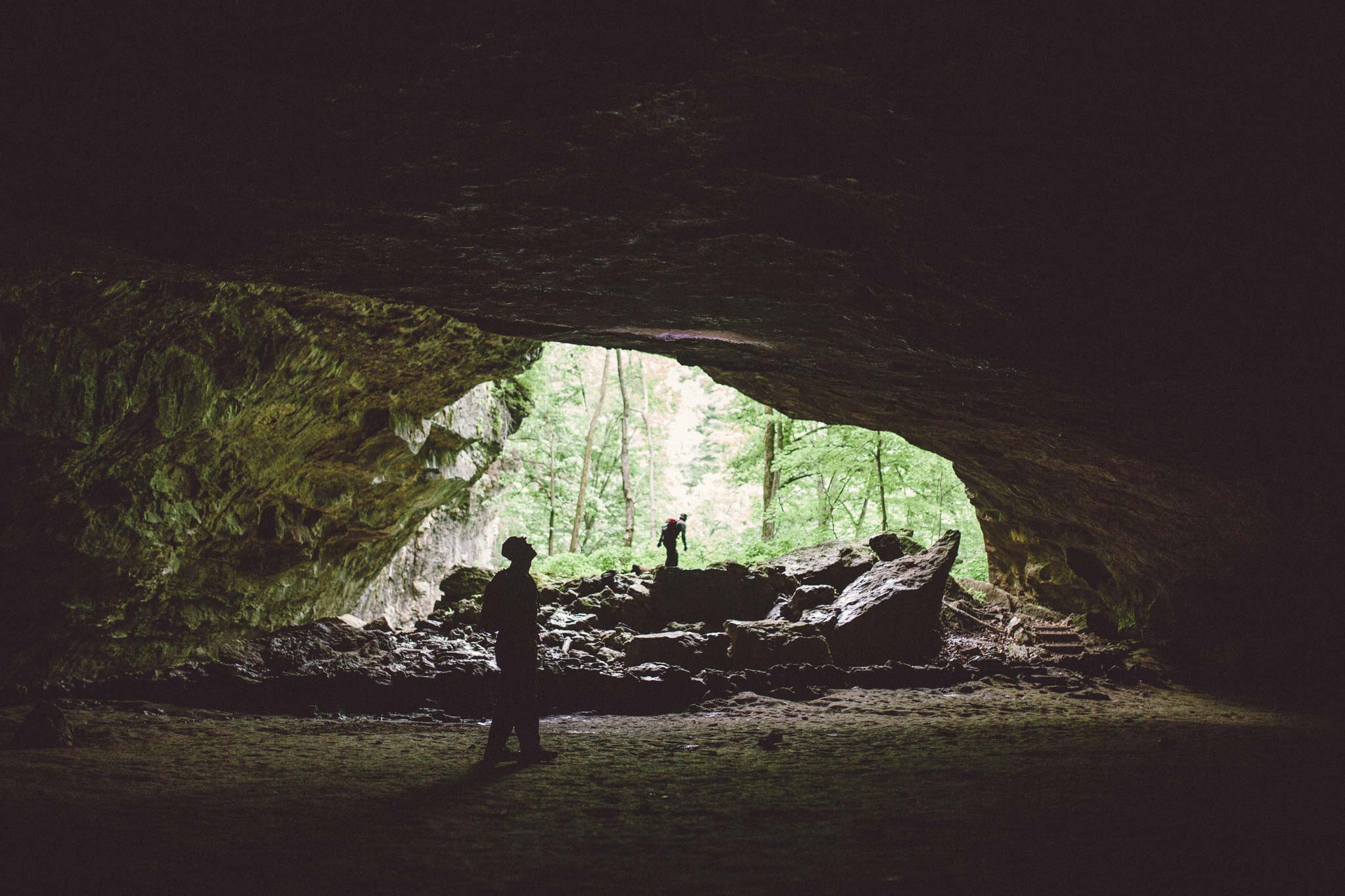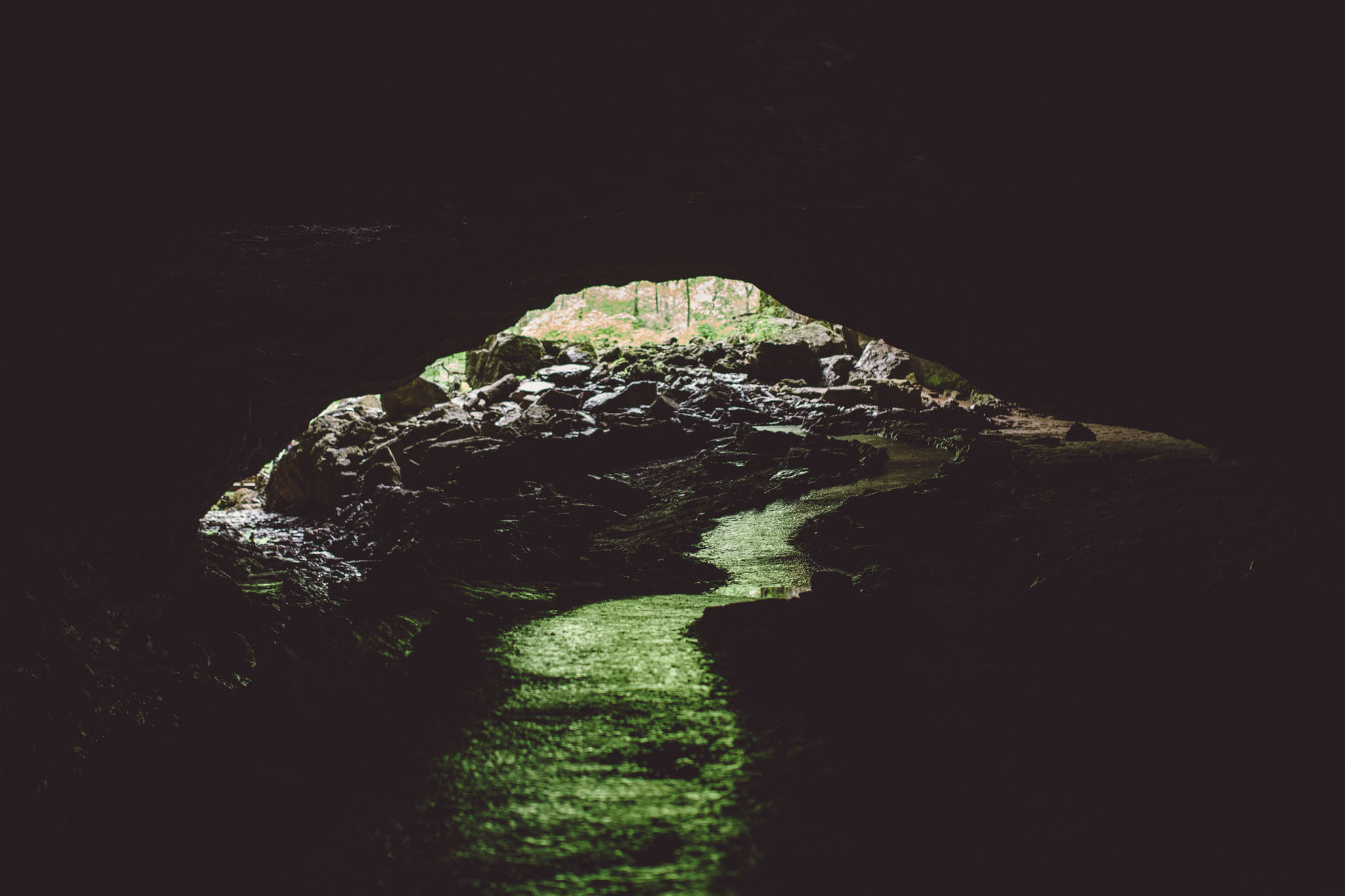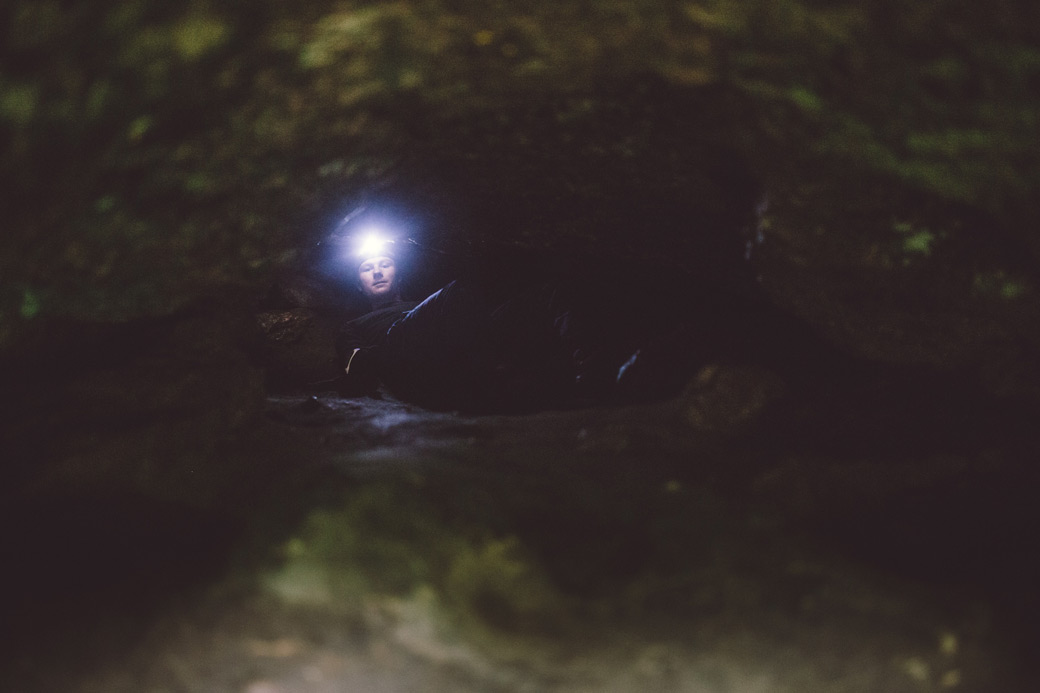Maquoketa Caves State Park
Subterranean Satisfaction Guaranteed
Don’t believe the propaganda. Iowa is more, much more, than flat land and cornfields. There’s nothing flat about western Iowa’s Loess Hills or the Driftless Area in the northeast part of the state. From the Missouri River to the Mighty Mississippi, beauty and adventure abound. Looking beneath the surface opens you up to a subterranean sanctuary at Maquoketa Caves State Park in eastern Iowa.
The Caves
The park has 13 descriptively or anecdotally named caves, and we explored them all, along with some unmarked ones, on a soggy Saturday that couldn’t dampen our spirits.
Main Attraction


Dancehall Cave
We belly-danced through tight tubes all day, but not in Dancehall Cave, which vaults overhead like a Gothic cathedral entrance.
Dancehall, said to be a venue for concerts and dances 150 years ago, is the largest cave in the park spanning 1,100 feet. Unlike the others, it’s a developed cave with three entrances and a lighted walking path, which makes it accessible for nearly everyone to enjoy.
While Dancehall is enough reason to make a Maquoketa trip, the wild caves offer even more adventure.
Fave Caves

Wye Cave
This Y-shaped cave homophonically poses a question that may be answered during a beautiful, eerie descent. You enter by climbing down driftwood and boulders in the mouth of a sinkhole and continue downward into the abyss for nearly 500 feet.
Up-N-Down
A rewarding little cave. If you can squeeze through a two-foot cranny, you’ll drop down into a payoff — a roughly 25-foot, standing-height nook.
Steel Gate Passage
While taking in Dancehall’s midsection, we observed an unexpected, unmarked opening. I ventured in ahead of the others to scout it out. After crouching below the low-ceiling entryway, the cave opened up overhead. Straddling a stream as I made my way through wind